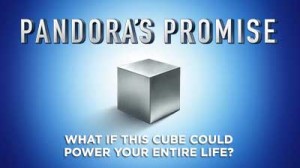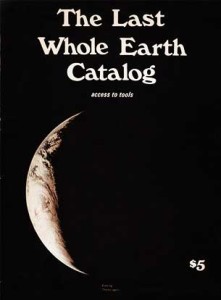Film (2013)
Written and Directed by Robert Stone
Original Music by Gary Lionelli
Cinematography by Howard Shack and Robert Stone
Film Editing by Don Kleszy and Robert Stone
With Stewart Brand, Gwyneth Cravens, Mark Lynas, Richard Rhodes, Michael Shellenberger, Charles Till
This thoughtfully constructed, but strongly biased, documentary, makes the case that nuclear energy can realistically solve the problem of global warming.
Two of its featured interviewees, and proponents of this position, are Steward Brand, famous as the publisher of that great New Age bible of earth-friendly ingenuity, The Whole Earth Catalog, and Richard Rhodes, the Pulitzer Prize winning author of The Making of the Atomic Bomb (1986).
Additionally, among others, Michael Shellenberger, a noted so-called “eco-pragmatist,” who has generally advocated the wide promotion of nuclear energy as a way to solve the problem of global warming while still enabling widespread productivity, weighs in significantly.
There are many scenes showing Geiger counters registering not horrible readings at various suspect sites around the world, including Fukushima and Chernobyl, with the general intent of demonstrating that the radiation spilled, though not wonderful, is not as bad as it might seem.
As well, there are sanguine presentations about the storage of nuclear waste, showing that present practices of containing it in storage vessels at nuclear plants is not so terrible either. The paradigmatic solution, as far as the film is concerned, is to develop sophisticated breeder reactors which use up all the nuclear waste over time.
Scenes which depict opponents of nuclear energy are few and far between and less than laudatory when they do appear. Helen Caldicott, the Australian doctor who has been a fervent and long-time advocate for eliminating nuclear energy, is portrayed as something of an hysterical madwoman.
The film is so one-sided that is comes across as a sophisticated advertisement. It proposes answers to questions it raises on its own quite well, but does not include opposing voices which might have raised questions more pointedly. Its thesis is so overwhelmingly optimistic about the lack of potential problems with nuclear energy that it is pretty hard to take it all seriously. Its concern with global warming is estimable, but the glee with which it portrays an earth throbbing with nuclear generated electricity (there actually is a brief animation to that effect) is so much like the marketing blather about clean energy that surfaced with nuclear plants in the 1960s that one is hard-pressed not to regard this approach as a recap of that kind of sure, let’s cook eggs on the reactor, why not simplemindedness.
And, I must say, it is particularly odd to see Stewart Brand in this role. When The Whole Earth Catalog came out in the 1960s, it was the kind of publication that encouraged localized technologies and self-sufficiency. One was far more likely to find The Whole Earth Catalog on the shelf of a cabin where back-to-the-earth hippies were living rather than in the library of Entergy Corporation or of General Electric. Technology makes strange bedfellows.
– BADMan


Leave a Reply